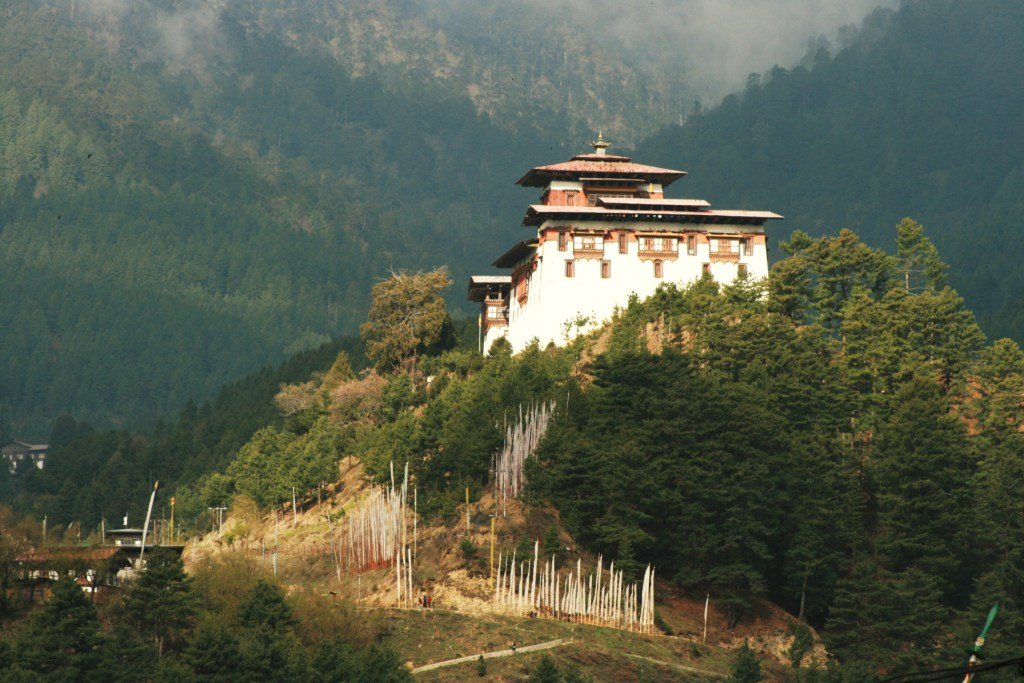
Zhemgang Tshechu
Zhemgang Dzong Zhemgang, BhutanThis festival takes you to Zhemgang Bhutan. This allows visitors to get close to the local community and appreciate the distinct culture of central Bhutan.

This festival takes you to Zhemgang Bhutan. This allows visitors to get close to the local community and appreciate the distinct culture of central Bhutan.

Gasa Tshechu stands as the largest festival in the compact Gasa district in the northwest of Bhutan. Gasa is inhabited by highlander communities, and amidst the numerous mask dances, the local folk performances hold a distinct and remarkable character that contributes to the lively atmosphere of the celebration.

Colorful Celebration in Bhutan. Welcome to the enchanting Talo Tshechu Festival! Here’s what makes it special: For three vibrant days, Talo comes alive with masked dances and lively atsara performances. Imagine swirling colors, intricate masks, and rhythmic movements—it’s a feast for the senses! As the sun sets, the Mani Sum songs take center stage. Each day, a different song: Samyi Sala, Drukpa Dungey, and Thowachi Gangi Tselay. These soulful tunes resonate with the pride of the Talo community. Be part of this cultural tapestry—immerse yourself in Bhutanese traditions. Let the music, dance, and community spirit sweep you away.

Paro Tshechu, the Paro Festival, is a renowned event in Bhutan that attracts attendees from nearby regions. On the festival's final day, monks unveil a grand embroidered painting, known as a Thangkha or Thongdrol. It is believed that merely gazing upon a Thongdrol can purify the sins of the observer. This is one of the most popular festivals for visitors into Bhutan.

Domkhar Tshechu is conducted at Domkar Lhundrup Choling Monastery, situated in Chumey Valley within the Bumthang district. Founded by Lama Kuenkhen Longchen Rabjam in the 16th century, this festival is an annual event and features sacred dances such as the black hat dance, the Three Ging, and the Drummers of Drametse. The special Peling Chams dance, a composition of Terton Pema Lingpa, is also performed. On the festival's final day, a large Thongdrol is displayed to bestow blessings upon the people of Domkhar village.

Ura Valley, situated in Bumthang, is renowned for its distinctive Ura Yakcho dance. This traditional mask and folk dance are showcased annually in Apr/May during a festival. Additionally, a sacred relic is exhibited for people to receive blessings. The festival is a local celebration in the Ura Valley, dedicated to fostering joy, bountiful harvests, and prosperity for both the villages and the entire nation. Ura Yakchoe is popular with our guests.

The Nimalung Festival is conducted at Nimalung Lhakhang, situated in Chumey within the Bumthang region. This Tshechu is an annual event, taking place in the 5th month of the Bhutanese calendar. A remarkable highlight is the display of a colossal 9-meter-wide Thongdrol of Guru Rimpoche, which not only evokes awe but is also believed to purify the sins of all who gaze upon it. Throughout the Tshechu, a series of vibrant and mesmerizing mask dances are performed.

Kurjey Tshechu, also known as the Kurjey Festival, is celebrated in Bumthang at Kurjey Lhakhang, which consists of three temples located in Chokhor Valley. This annual festival occurs in July. The oldest temple, established by Lama Minjur Tempa, dates back to 1652, while the second temple was constructed by Gongsa Ugyen Wangchuk in 1900. The third temple, built by Queen Mother Ashi Kezang Choden Wangchuk, was completed in 1990.

In the vibrant capital of Bhutan, Thimphu, a unique religious festival known as Thimphu Drubchen takes center stage, preceding the grand spectacle of Thimphu Tshechu. This is held over three days before Tshechu and is a deeply rooted tradition that has captivated both locals and visitors for centuries. However, the 2nd day is considered the most important. The origins of Thimphu Drubchen can be traced back to the early 18th century, when Kuenga Gyeltshen, the first reincarnation of Jampel Dorji and son of Zhabdrung Nawang Namgyel, introduced it. According to legend, Kuenga Gyeltshen witnessed the deity Palden Lhamo performing sacred dances while he was in meditation. Inspired by this divine vision, he initiated the Drubchen ceremony. The heart of Thimphu Drubchen lies in its mesmerizing mask dances, performed by monks and dedicated to Palden Lhamo, the protector deity of Bhutan. These dances, believed to possess the power to ward off…

Nestled amidst the breathtaking landscapes of western Bhutan lies the quaint town of Haa, home to the vibrant annual Haa Tshechu festival. This three-day extravaganza, introduced in 1990, pays homage to the revered Guru Padmasambhava, a pivotal figure in Bhutan's Buddhist history. The heart of the Haa Tshechu unfolds within the sacred courtyard of Lhakhang Karpo, a temple that stands as a beacon of faith for the local community. Over the course of three days, the courtyard transforms into a mesmerizing stage for a series of captivating mask dances. Among the most captivating performances is the Shazam mask dance, a symbolic representation of eight dakinis, female guardian deities. These powerful beings, depicted by male dancers adorned in elaborate masks and costumes, embody the wrathful aspect of compassion, protecting the faithful from evil spirits and bestowing blessings. The culmination of the Haa Tshechu is the unfurling of the Guru Nangsi Zilon…
Nestled amidst the majestic peaks of Bhutan's central region lies the picturesque district of Wangdue Phodrang. Every year, this tranquil haven comes alive with the vibrant hues and soulful melodies of the Wangdue Phodrang Tsechu, an annual religious and cultural festival that holds deep significance for the local community and visitors alike. The tshechu is performed at the dzong which has been rebuilt following a devastating fire over ten years ago. At the heart of the Wangdue Phodrang Tsechu lies a deep reverence for Bhutan's rich spiritual heritage. This three-day spectacle, held on the 10th day of the lunar month, is dedicated to celebrating the life of Guru Padmasambhava, a revered Buddhist teacher who played a pivotal role in introducing Buddhism to Bhutan. The festival's courtyard transforms into a mesmerizing stage for a series of captivating mask dances, each carrying symbolic meaning and embodying the teachings of Buddhism. The Shazam…

Tamshing Phala Choepa: A Tribute to Pema Lingpa In the tranquil landscapes of Bumthang, Bhutan, lies the venerated Tamshing Monastery, a spiritual sanctuary renowned for its profound connection to Pema Lingpa, one of the five Terton Kings in Mahayana Buddhism. Each year, the monastery transforms into a vibrant stage for the Tamshing Phala Choepa festival, a three-day celebration honoring Pema Lingpa's extraordinary legacy. The festival's captivating centerpiece is a series of mask dances, each infused with symbolic meaning and embodying the teachings of Buddhism. Dancers adorned in elaborate costumes and masks perform with captivating grace, their movements echoing the stories and teachings passed down through generations.
